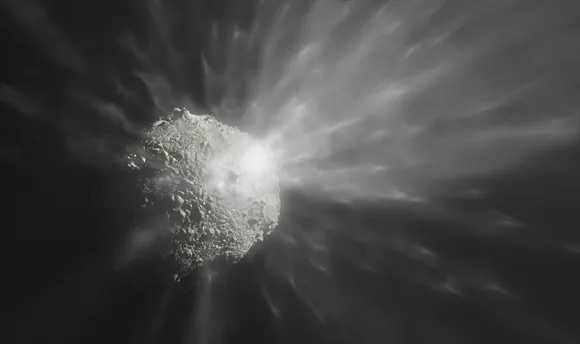
Scientists Discover Groundbreaking Method to Deflect Dangerous Asteroids Using Nuclear-Style X-ray Pulses!
2024-09-24
Introduction
In a startling revelation that could change the course of planetary defense, researchers have unveiled that X-ray pulses generated from a nuclear explosion could effectively deflect potentially dangerous asteroids from colliding with Earth. This development comes in the wake of catastrophic events like the Chicxulub asteroid impact, which occurred around 66 million years ago and is credited with causing mass extinction and global climate shifts.
The Need for Effective Strategies
While NASA's innovative Double Asteroid Redirection Test (DART) mission successfully demonstrated the potential for spacecraft to alter the trajectories of near-Earth objects, the urgent need remains for more energy-intensive strategies for the most formidable threats. Traditional physical impact methods can be prohibitively expensive and time-consuming, leaving scientists in search of faster solutions.
Research Breakthrough at Sandia National Laboratories
The breakthrough emerged from experimental studies at Sandia National Laboratories, where researcher Nathan Moore and his team employed a pulsed power device dubbed the Z machine. By simulating a nuclear event, they generated X-ray pulses that were aimed at two small-scale asteroid models made of quartz and fused silica in a vacuum environment. The astonishing results revealed that the X-ray pulses heated the surfaces of these mock asteroids, leading to the formation of vapor plumes. These plumes produced enough momentum to accelerate the targets forward at impressive speeds of about 69.5 m/s for quartz and 70.3 m/s for silica.
Implications for Planetary Defense
What’s even more promising is that their research suggests that this method could potentially deflect real asteroids, specifically those with diameters of around 4 kilometers, when applied as a nuclear impactor strategy. The research team has called for further experiments with various target materials and X-ray pulse configurations, emphasizing the role of the asteroid's chemical composition in the effectiveness of this innovative deflection technique.
Broader Questions and Future Research
Notably, this research not only highlights the potential of X-ray-based methods for planetary defense but also poses exciting new questions about the chemistry of asteroids and how differing materials might react to such advanced techniques. The findings were recently published in the prestigious journal Nature Physics.
Conclusion
As global concern mounts over the threat posed by near-Earth objects, this pioneering approach could offer a new lifeline for future planetary defense missions, making humanity's ability to safeguard our planet more viable than ever before. Could it be that we are on the brink of a revolutionary defense mechanism? Only time will tell!



 Brasil (PT)
Brasil (PT)
 Canada (EN)
Canada (EN)
 Chile (ES)
Chile (ES)
 España (ES)
España (ES)
 France (FR)
France (FR)
 Hong Kong (EN)
Hong Kong (EN)
 Italia (IT)
Italia (IT)
 日本 (JA)
日本 (JA)
 Magyarország (HU)
Magyarország (HU)
 Norge (NO)
Norge (NO)
 Polska (PL)
Polska (PL)
 Schweiz (DE)
Schweiz (DE)
 Singapore (EN)
Singapore (EN)
 Sverige (SV)
Sverige (SV)
 Suomi (FI)
Suomi (FI)
 Türkiye (TR)
Türkiye (TR)